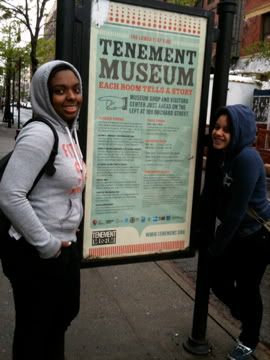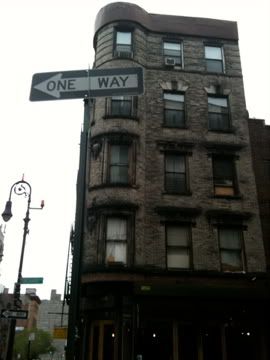Carson
MHSHS
2010-2011
The final portfolio is a selection of a scholar’s work and the scholar’s own evaluation of that work, organized to show evidence of academic growth and progress. The portfolio is a culminating project which is aimed at demonstrating the various genres of writing that students have learned throughout the year. They will have the opportunity to reflect on their growth as a writer and thinker as scholars select various pieces of writing; journal entries, final essays, reflections, responses, creative writing, poetry and research projects. Both selecting the work to include in the portfolio and reflecting on evidence of learning should help the student become more conscious of how (s)he learns, getting them more involved in goal-setting.
A portfolio of writing/digital aspects counts as 100 points of your English final exam. The Final portfolio is due Wednesday May 18th. Failure to submit the portfolio on or before this deadline will result in a failing final exam grade, loss of 5% of overall Junior Grade. All students will be required to defend their portfolio in a one-on-one conversation, which will be worth 100 points. You will have a scheduled time to defend your portfolio during the weeks of May 23rd -June 3rd.(these earlier due dates are to alleviate the stress that goes with Regents Week - beginning June 14, 2011).
The pieces in your portfolio must all be writings you have worked on in English Sept. 2010- May, 2011. All pieces should show some revising and editing since last read, and all drafts of chosen work should be included. Each piece that appears in your portfolio should appear in final, polished, publishable form, with no errors.
Visual Components of the Portfolio:
Your portfolio should be submitted in a presentable manner, in a three ring binder notebook, with the following requirements:
- A presentable, appealing cover page with the name of your portfolio, your full name, teacher’s name, school’s name, and date of submission.
- All final work MUST be typed MLA format, with the exception of hand written drafts or creative work.
- A table of contents in which you introduce the titles or names of all the work that the portfolio contains
- Each of the required six (6) contents
- General introduction
- Introduction to each included piece of writing
Page Guidelines: 25-50 Pages, exclusive of drafts
_______________________________________
Academic Contents- Each portfolio must contain, but is not limited to the following:
I. Informational Reporting, Analysis, and Evaluation
Examples:
Research reports/Thesis/Support essay
Feature Article
Expository Essay
Editorial, Letter to the Editor
Current Events
Persuasive Essay
Explanatory Essay based on historical events
II. Humanities Project
You must include a final, clean and revised copy of your current events research project. CD/DVD/Flash or PP Print-outs with BIBLIOGRAPHIES, all aspects completed according rubrics (Photo Essay, Videos of Slave Narrative Projects, Debates or other presentations)
III. Literary Response and Analysis
Examples:
Response to literary texts, themes, and techniques
Literary interpretation
Critique or explanation of literature
Book, Film, or drama review
Analytical or interpretive essay
Personal analysis of text
Text response
IV. Literary Expression (Creative, Imaginative, Expressive Writing)
Examples:
Short Fiction
Play, Dramatic Script
Personal Narrative
First person writing exercises
Creative Non-Fiction
Descriptive Writing
V. Poetry (5-poems)
VI. Overall Self-Reflection
A three-paged paper for all scholars MLA
double spaced, 12 point TNR or other comparable font introduction to your portfolio that describes your overall development this year as a writer, thinker, debater/speaker, and learner in English class. You must include a discussion of the following:
1. Yourself as a scholar (overall)
2. Yourself as an English scholar comparing last 2-3 years to this year.
3. An evaluation of how well you have improved this year in the skills of listening, reading,
writing, and speaking. Give specific examples to demonstrate improvements.
4. Your goals for improvement over the next year in terms of these skills.
5. Your strengths and weaknesses as an English scholar
6. Your candid reaction to the quality of your work during this course.
Page Guidelines: 25-50 Pages, exclusive of drafts
Examples of above:
I. Immigration, Gay Rights, Abortion Debate (Reflections), Nature/Nurture Research Essay, Mock Trials (Huck Finn Projects); Religious Paradoxes [Kanye West, Madonna and Edward Taylor]”Jesus Walks” – “Like a Prayer” and Slave Research Paper (Ms. Moore) (7)
II. Slave Narrative Project, Hibakusha Reflections (P7 and select few others), Slave Research Paper (Ms. Moore), Immigration, Gay Rights, Abortion Debate (Reflections), Nature/Nurture Research Essay, Harlem Renaissance Field Trip (Photo – Interview Essays – April/May), Tenement Museums Field Trips (Photo- Interview Essays) as well as Spanish Harlem (May/June).
(10)
III. “The Ballad of Thoreau”, “Colbert Report”, “The Daily Show”, “Nature: Determine It”, “American Dream”, “Crucible-Movie vs. Play”, Religious Paradoxes [Kanye West, Madonna and Edward Taylor]”, “Tonsils”, by Bill Cosby; “Phillis Wheatley Persecution Response”; Slave Songs Reflections, Mary Prince Debates (all BUT P8), "Dead Poets Society", "Roots", (March), "Ragtime", "Fences", "Angela's Ashes", "The Souls of Black Folks", Response to Emma Goldman Speech, Reflection to Ragtime Movie vs. novel, "The Color of Water", "Their Eyes Were Watching God", "The Great Gatsby", (May)
(24+)
IV. Slave Narrative Project, Harlem-Tenement Blog-Photo Essays
(3)
V. Poems from Slave, Transcendental, Gilded Age Units, Hucklebery Found Poems, Improv, or Jazz Poetry.
(7+)
As you can see there are several things that cross-connect. Pick your absolute BEST work for each section.
Defense of Portfolio: (May 23 - June 3) - One-on-one conferences
Why have you chosen these particular pieces for this project?
What have you learned while working through ___________ [essay, research paper, debate]?
What was your favorite novel/text and why?
Your least favorite or most dreaded and why?
What specific skills do you believe are ones you still must work on improving? Why?
What are some of your strengths?
How do you plan on improving them?
What is your best way of learning?
Which Reading Strategy works best for you? Will you use it and others in coming years?
What are some things about my teaching that you found confusing, unhelpful or useless?
Recommendations for Summer Reading and Writing
With the addition of the LGTs and blog which did you find most helpful?
Was there too much redundancy or were the re-enforcements helpful, confusing, distracting?




 Jamie's 5-4-11 shots
Jamie's 5-4-11 shots


